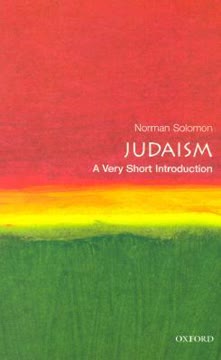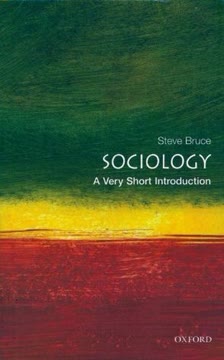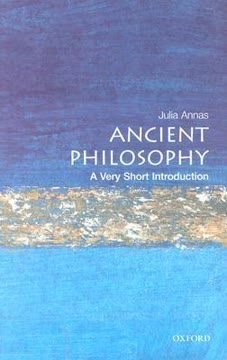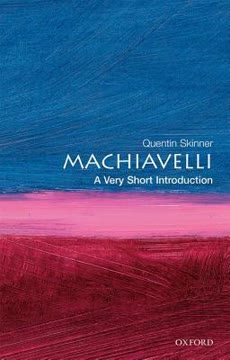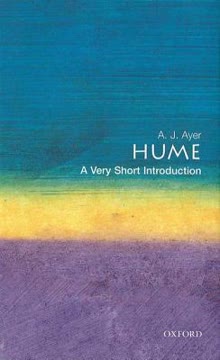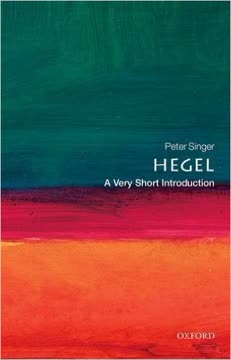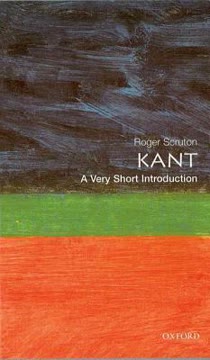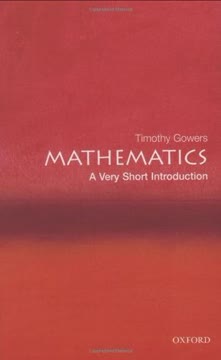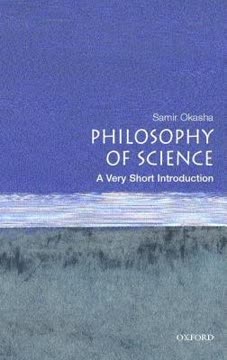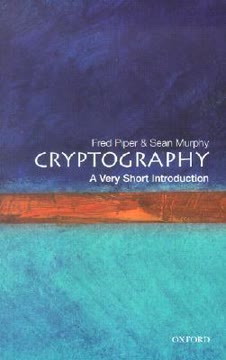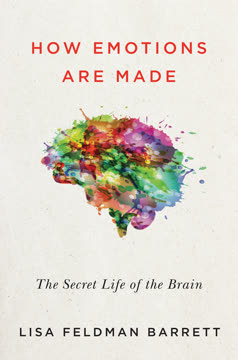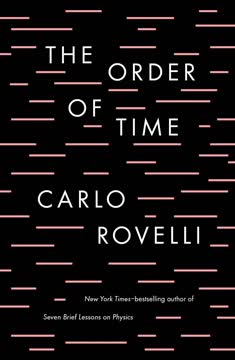つの重要なポイント
1. 記憶は日常生活に不可欠な複雑で多成分のシステムである
人生のすべては記憶であり、現在の薄い縁を除いて。
記憶は私たちの生活に浸透しています。 記憶がなければ、話すこと、読むこと、物を識別すること、環境をナビゲートすること、個人的な関係を維持することができません。記憶は過去の出来事を思い出し、新しい情報を学び、将来の行動を形作ることを可能にします。それは単一の存在ではなく、私たちの自己と現実感を作り出すために連携する相互接続されたシステムとプロセスの集合です。
記憶システムには以下が含まれます:
- 感覚記憶:感覚からの情報を一瞬保持する
- 短期記憶:即時使用のために情報を一時的に保存する
- 作業記憶:短期的に情報を操作し処理する
- 長期記憶:情報を長期間、場合によっては一生保存する
これらのシステムは相互に作用し合い、私たちが効果的に世界で機能することを可能にします。記憶は私たちの認識、決定、行動を形作り、人間の認知と経験の基本的な側面となっています。
2. 記憶の基本的なプロセスはエンコーディング、保存、そして検索である
効果的な記憶システムは、オーディオやビデオカセットレコーダー、コンピュータのハードディスク、または単純なファイリングキャビネットであっても、3つのことをうまく行う必要があります。それは、情報をエンコード(取得)し、その情報を忠実に保存し、特に長期記憶の場合、長期間にわたってその情報を検索またはアクセスすることです。
エンコーディングは、感覚情報を記憶に保存できる形式に変換するプロセスです。これには、情報への注意、知覚、解釈が含まれます。エンコーディングの深さと質は、後で情報がどれだけよく記憶されるかに大きく影響します。
保存は、エンコードされた情報を時間の経過とともに維持することです。異なる種類の記憶は、異なる保存容量と期間を持っています:
- 感覚記憶:ミリ秒から数秒
- 短期記憶:数秒から数分
- 長期記憶:数日から一生
検索は、必要なときに保存された情報にアクセスするプロセスです。これは、記憶の痕跡の強さ、検索の文脈、検索キューの存在など、さまざまな要因によって影響を受けます。効果的な検索は、情報が最初にどれだけうまくエンコードされ保存されたかに依存することが多いです。
3. 作業記憶と長期記憶は異なるが相互に関連する機能を持つ
コンピュータのディスクドライブのアナロジーは、記憶におけるエンコーディング、保存、検索の区別を理解するのにも役立ちます。インターネット上の膨大な情報を考えてみてください。これは巨大な長期記憶システムと考えることができます。しかし、インターネットから情報を検索し取得するための効果的なツールがなければ、その情報は実質的に役に立たないものです:理論的には利用可能ですが、必要なときに実際にアクセスできるかどうかは別問題です。
作業記憶は、コンピュータのRAMのように、即時使用のために情報を一時的に保持し操作します。容量は限られており(約7±2項目)、持続時間は数秒から数分です。作業記憶は、計算、問題解決、言語理解などのタスクに不可欠です。
長期記憶は、コンピュータのハードドライブに例えられ、膨大な情報を長期間保存します。これには以下が含まれます:
- エピソード記憶:個人的な経験や出来事
- セマンティック記憶:一般的な知識や事実
- 手続き記憶:スキルやタスクの実行方法
作業記憶と長期記憶の相互作用は、学習と認知機能に不可欠です。作業記憶は新しい情報を処理し、長期記憶から関連情報を検索し、長期記憶は作業記憶から情報を統合し将来の使用のために保存します。
4. 記憶は再構築的であり、過去の出来事の完璧な記録ではない
第1章で見たように、以前の出来事や情報をビデオテープのように頭の中で「再生」していると信じているときでさえ、実際には記憶を実際に覚えている断片と、それらの断片がどのように組み立てられるべきかについての一般的な(すなわちセマンティックな)知識とを組み合わせて構築しています。
記憶は過去の出来事の忠実な再現ではなく、さまざまな要因によって影響を受ける再構築です。 この再構築的な性質は、不正確さ、歪み、偽の記憶を引き起こす可能性があります。現在の知識、信念、期待が、過去の出来事をどのように記憶し解釈するかに影響を与えます。
記憶の再構築に影響を与える要因:
- スキーマ:情報を整理し解釈するための精神的枠組み
- 提案:記憶を変える可能性のある外部情報
- 感情状態:記憶のエンコードと検索に影響を与える
- 文脈:エンコードと検索の環境と状況
記憶の再構築的性質を理解することは、目撃証言、治療、個人的な反省などの分野に重要な意味を持ちます。重要な決定や判断において、記憶だけに頼ることの危険性を強調しています。
5. 記憶術と組織化戦略は記憶を大幅に向上させることができる
記憶術は、イメージ記憶術の柔軟な使用を可能にし、劇的に効果的です。実際、ほとんどのプロの記憶改善技術の基礎を形成しています。
記憶術は、 連想、イメージ、組織化を使用して情報の保持と想起を改善する記憶技術です。これらの戦略は、脳が視覚的で意味のある情報を抽象的または無関係なデータよりもよく覚える自然な能力を利用します。
一般的な記憶術の技法には以下が含まれます:
- 場所法:情報を特定の場所と関連付ける
- ペグワード法:覚えるべき項目を事前に覚えた単語とリンクする
- 頭字語とアクロスティック:最初の文字から覚えやすいフレーズや単語を作成する
- チャンク化:情報を意味のある単位にグループ化する
- 詩や歌:リズムとメロディを使用して記憶を助ける
組織化戦略、例えば分類や階層的構造化も、情報の間に意味のあるつながりを作ることで記憶を向上させることができます。これらの技術は、保持を改善するだけでなく、必要なときに情報をより効率的に検索することも可能にします。
6. 目撃証言は記憶のバイアスと暗示性のために信頼性が低いことが多い
エリザベス・ロフタスと彼女の同僚は、誤情報効果を深く探求しました。特に、ロフタスと同僚は、介入的で誤解を招く質問や情報の後に記憶の歪みを繰り返し実証しました。
目撃証言はさまざまなバイアスや歪みに影響を受けやすく、一般に信じられているほど信頼性が高くありません。ストレス、武器の存在、時間の経過などの要因が、目撃者の記憶の正確さに大きく影響します。
目撃証言に影響を与える主な問題:
- 誤情報効果:出来事後の情報が元の出来事の記憶を変える
- 暗示性:誘導的な質問が記憶の想起に影響を与える
- ソースモニタリングエラー:記憶の情報源を混同する
- 確証バイアス:既存の信念を確認する情報を求める傾向
- ストレスと覚醒:注意を狭め、記憶形成を妨げる
これらの制限を理解することは、法制度にとって重要であり、犯罪捜査において裏付け証拠と慎重な質問技術の必要性を強調しています。また、目撃者の証言を迅速かつ偏りなく収集する重要性も強調しています。
7. 記憶は生涯を通じて変化し、発達と老化に影響を与える
横断的および縦断的研究の結果を考慮すると、老化と記憶に関する研究から一貫した発見がいくつか浮かび上がっています。特に、子供と高齢者の記憶能力のプロファイルには類似点があることが注目されます。
記憶は生涯を通じて発達し変化します。 幼少期には、脳が成熟し認知戦略が発達するにつれて記憶容量が徐々に増加します。成人期には、記憶は一般的に安定していますが、練習と学習によって向上することができます。高齢期には、記憶の一部が低下することがありますが、他の部分は安定しているか、さらには向上することもあります。
生涯にわたる記憶に関する重要なポイント:
- 幼児期健忘:3〜4歳以前の出来事を覚えるのが難しい
- 作業記憶:幼少期に向上し、成人期に安定し、高齢期に低下することがある
- エピソード記憶:幼少期に発達し、若年成人期にピークを迎え、年齢とともに低下することがある
- セマンティック記憶:生涯を通じて向上し続ける
- 手続き記憶:生涯を通じて比較的安定している
これらの変化を理解することは、教育、認知トレーニング、年齢関連の記憶問題に対処するために重要です。また、脳の可塑性と生涯にわたる学習と記憶の向上の可能性を強調しています。
8. 脳の損傷や障害は特定の記憶機能を選択的に損なうことがある
記憶障害症候群は、特定の脳損傷(通常は海馬や間脳を含む)を伴う記憶障害の最も純粋な例です。
脳の損傷は記憶に選択的に影響を与えることがあり、 脳内の記憶システムの組織についての洞察を提供します。特定の脳領域の損傷によって異なる種類の記憶障害が生じ、脳内の記憶プロセスの複雑で分散した性質を示しています。
記憶障害の例とその影響:
- 前向性健忘:新しい長期記憶を形成できない
- 逆行性健忘:損傷前に形成された記憶を失う
- 相貌失認:顔の認識に特有の障害
- セマンティック認知症:セマンティック知識の喪失
- コルサコフ症候群:チアミン欠乏による重度の記憶障害
これらの障害の研究は、記憶システムの理解に大きく貢献し、リハビリテーション戦略や記憶障害の治療法の開発に役立っています。
9. 記憶を向上させるには積極的な関与と効果的な学習技術が必要である
自分で何かを覚える(例えば、単語のスペルを思い出す)と、記憶がより効果的に強化される傾向があります。
記憶を向上させるには、 より深いレベルの処理を行い、より強力で詳細な記憶痕跡を作成する積極的な戦略と技術が必要です。記憶の生物学的「ハードウェア」を劇的に改善する簡単な方法はありませんが、学習と想起のプロセスを最適化することは可能です。
効果的な記憶改善技術:
- 分散学習:学習セッションを時間をかけて分散させる
- 精緻化リハーサル:情報の意味とつながりに焦点を当てる
- 積極的な想起:自分自身をテストする
- 視覚化:情報を表すための心象を作成する
- 文脈学習:情報を想起する必要がある環境に似た環境で学習する
- 意味のある組織化:関連する情報をグループ化する
- 他人に教える:概念を説明して理解を強化する
これらの技術を適用し、適切な睡眠、運動、栄養を含む健康的なライフスタイルを維持することで、個人は記憶のパフォーマンスと学習効率を大幅に向上させることができます。
最終更新日:
FAQ
What is "Memory: A Very Short Introduction" by Jonathan K. Foster about?
- Concise overview of memory: The book provides a clear, accessible introduction to the science of human memory, covering its mechanisms, types, and importance in daily life.
- Historical and modern perspectives: It traces the evolution of memory research, from early philosophical ideas to contemporary scientific models and experiments.
- Practical and clinical relevance: The book discusses memory’s role in everyday activities, its failures, and what happens when memory is impaired due to injury or disease.
- Broad scope: Topics include memory development, memory improvement techniques, and the impact of aging and disorders on memory.
Why should I read "Memory: A Very Short Introduction" by Jonathan K. Foster?
- Expert-written and accessible: Foster, an expert in the field, distills complex research into an engaging and understandable format for general readers.
- Comprehensive yet concise: The book covers essential concepts, key experiments, and practical advice without overwhelming detail.
- Relevance to everyday life: Understanding memory helps readers appreciate its role in learning, relationships, and personal identity.
- Critical thinking about memory: The book encourages readers to question common assumptions and recognize the strengths and limitations of human memory.
What are the key takeaways from "Memory: A Very Short Introduction"?
- Memory is multifaceted: Memory is not a single entity but a collection of different systems and processes (e.g., short-term, long-term, episodic, semantic, procedural).
- Active and reconstructive: Memory is an active, selective, and reconstructive process, not a passive recording of events.
- Influenced by context and meaning: What we remember is shaped by context, prior knowledge, emotional state, and the meaning we assign to information.
- Memory can be improved: Techniques such as spaced practice, mnemonics, and elaborative rehearsal can enhance memory performance.
How does Jonathan K. Foster define and explain the main types of memory in "Memory: A Very Short Introduction"?
- Short-term vs. long-term memory: Short-term memory holds information briefly and has limited capacity, while long-term memory stores information more permanently and with greater capacity.
- Working memory: A more active form of short-term memory, involving manipulation and processing of information (central executive, phonological loop, visuo-spatial sketchpad).
- Episodic and semantic memory: Episodic memory involves personal experiences and specific events, while semantic memory refers to general knowledge and facts.
- Procedural and implicit memory: Procedural memory involves skills and habits, often unconscious, while implicit memory refers to influences on behavior without conscious recollection.
What are the most important models and theories of memory discussed in "Memory: A Very Short Introduction"?
- Atkinson-Shiffrin model: Proposes a multi-store model with sensory, short-term, and long-term memory stages.
- Baddeley’s working memory model: Divides working memory into the central executive, phonological loop, visuo-spatial sketchpad, and episodic buffer.
- Levels of processing framework: Suggests that deeper, more meaningful processing at encoding leads to better memory retention.
- Encoding specificity principle: Emphasizes that memory retrieval is most effective when the context at encoding matches the context at retrieval.
How does "Memory: A Very Short Introduction" explain memory errors, forgetting, and inaccuracies?
- Forgetting mechanisms: Memory loss can result from decay over time or interference from similar memories.
- Reconstructive nature: Memory is reconstructive, leading to distortions, biases, and the blending of real and imagined events.
- Misinformation effect: Suggestibility and leading questions can alter or create false memories, as shown in eyewitness testimony research.
- Schemas and prior knowledge: Existing knowledge structures (schemas) can both aid and mislead memory, causing us to remember what fits our expectations.
What does Jonathan K. Foster say about memory impairment and amnesia in "Memory: A Very Short Introduction"?
- Amnesic syndrome: Typically results from damage to the hippocampus or related brain areas, leading to severe difficulties in forming new long-term memories (anterograde amnesia) and sometimes loss of past memories (retrograde amnesia).
- Preserved abilities: Despite amnesia, patients often retain intelligence, language, and procedural memory (skills and habits).
- Case studies: The book discusses famous cases like HM and NA, illustrating how different types of memory can be selectively impaired.
- Assessment and rehabilitation: Memory disorders are assessed with standardized tests, and strategies like errorless learning and external aids can help manage impairments.
How does "Memory: A Very Short Introduction" address memory development and aging?
- Developmental trajectory: Memory abilities develop gradually in childhood, with explicit memory and meta-memory skills maturing over time.
- Infantile amnesia: Most people cannot recall events from before age four, possibly due to biological and psychological factors.
- Aging and memory: Normal aging affects some memory systems (e.g., episodic and working memory) more than others (e.g., semantic and implicit memory).
- Dementia and MCI: The book discusses mild cognitive impairment and Alzheimer’s disease, highlighting early memory deficits and the importance of early detection.
What practical advice and methods for improving memory does "Memory: A Very Short Introduction" offer?
- Spaced practice: Distribute learning over time rather than cramming for better long-term retention.
- Elaborative rehearsal: Focus on the meaning of information and relate it to existing knowledge.
- Mnemonics: Use techniques like the method of loci, pegwords, and verbal mnemonics to organize and encode information more effectively.
- External aids: Employ diaries, digital reminders, and other tools to support memory, especially when natural memory is impaired.
What are the best quotes from "Memory: A Very Short Introduction" and what do they mean?
- "Everything in life is memory, save for the thin edge of the present." (Michel Gazzaniga): Highlights the pervasive role of memory in shaping our experiences and actions.
- "Remembering is not the re-excitation of innumerable fixed, lifeless and fragmentary traces. It is an imaginative reconstruction..." (Frederick Bartlett): Emphasizes that memory is an active, creative process, not a passive replay.
- "Education is what survives when what has been learnt has been forgotten." (B.F. Skinner): Suggests that learning leaves lasting, often unconscious, traces that influence future behavior.
- "Happiness is nothing more than good health and a bad memory." (Albert Schweitzer): Implies that forgetting can be adaptive and beneficial, preventing overload and distress.
How does "Memory: A Very Short Introduction" discuss the relationship between memory, identity, and personal experience?
- Memory and self: The book argues that memory is central to personal identity, enabling continuity of self over time.
- Loss of memory and identity: Amnesia and dissociative states can disrupt the sense of self, as seen in clinical cases and psychological disorders.
- Autobiographical memory: Episodic memory allows us to recall personal life events, shaping our narrative identity.
- Constructed experience: Each person’s memory of an event is unique, influenced by individual values, emotions, and prior experiences.
What are the main challenges and limitations in studying memory, according to "Memory: A Very Short Introduction"?
- Indirect measurement: Memory is inferred from behavior, not directly observed, making it difficult to isolate memory processes from other influences.
- Complexity and variability: Memory involves multiple systems and is affected by attention, motivation, context, and individual differences.
- Experimental design: Good research requires careful control of variables and appropriate comparison groups to draw valid conclusions.
- Ongoing questions: Despite advances, many aspects of memory—such as the precise mechanisms of storage and retrieval—remain unresolved, leaving room for future research.
レビュー
記憶: 非常に短い入門書は、人間の記憶の複雑な働きを探求し、記憶の種類、検索プロセス、一般的な失敗などのトピックをカバーしている。読者はその科学的アプローチを称賛しつつも、学術的な言語が時折難解であると感じることがある。多くの人々は、日常生活やアイデンティティ形成における記憶の役割についての洞察を高く評価している。特に、記憶改善技術に関する最終章が非常に有用であると強調されている。全体として、読者はこの本を主題への堅実な入門書と見なしているが、より魅力的な文章や最新の研究を求める声もある。
Very Short Introductions Series Series
